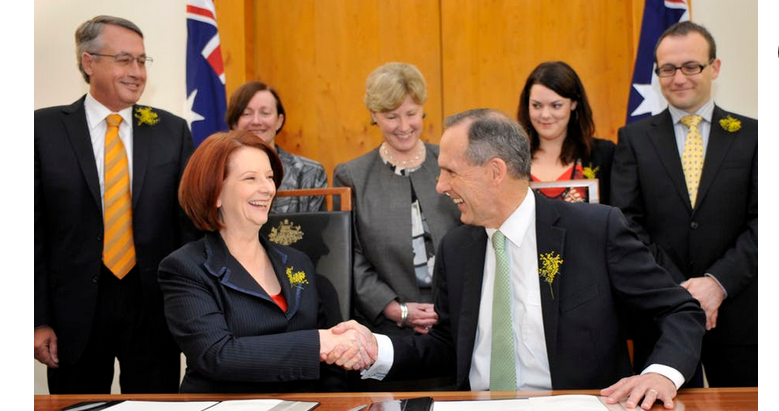Rafe Champion: The Green Left’s Long March
The anti-nuclear movement spawned today’s radical environmentalism. Using the ‘front group’ tactic beloved of communist agitators, it fed lies to sympathetic reporters and whipped reasonable concerns into hair-trigger sensitivities. Its progeny is your last and ever more outrageous electricity bill.
An essential aspect of the vigilance that sustains liberty is the capacity to learn the lessons of history. What follows describes how radical activists captured the environmental movement as a part of the march through the institutions of Western society. The worldwide campaign against nuclear power became the foundation and testbed for the strategy and tactics of using environmentalism to de-industrialise and demoralise the West. The most recent manifestation of the movement is the climate scare and the push for expensive and unreliable renewable energy.
In 1980, the late John Grover thoroughly documented the anti-nuclear campaign in The Struggle for Power: What We Haven’t Been Told and Why! This account is drawn from his research. Grover was a mining engineer with an eye for the tactics of the Fabians and their more radical fellow travellers. He named some of the people and the main groups involved in the anti-uranium mining and anti-nuclear power movement, both internationally and locally.
The anti-nuclear movement started in the 1950s while American and Russian bomb tests were dispersing plutonium into the atmosphere. This aroused reasonable objections and also a very different kind of resistance to the Western nuclear deterrent and nuclear power in general. The 1963 Nuclear Test Ban Treaty answered the reasonable concerns and was not a problem for the nuclear power industry, but in the 1970s the US created 20,000 government employees dedicated to improving the environment. Nuclear power stations soon became a target due to “thermal pollution” from their cooling systems, this tack being backed up by fear campaigns about the dangers of radiation.
Two sensationalized books appeared in 1969/70, The Careless Atom by Sheldon Novick and Perils of the Peaceful Atom by Richard Curtis, the former garnering generally favourable and accepting reviews that would set the standard for all the media sympathy to come. The books’ appearance also marked the start of the all-out campaign against nuclear energy.
In 1971 Ralph Nader, bankrolled by the Rockefeller Foundation network, began to work with lawyer Anthony Roisman and the Union of Concerned Scientists to combine the efforts of environmental groups and public interest lawyers against atomic power. According to Grover, by 1977 environmental interests funded as many as 600 environmental lawyers in the US with a budget in the order of $45 million, much of it devoted to energy-stopping. They worked on a wide front, using legal action to delay projects, lobbying Congress and government agencies, recruiting churches and distributing publicity material to the general public. They fuelled exaggerated perceptions of the dangers of radiation and the purported incompetence of the industry. A long-established environmental group, the Sierra Club in California, became more extreme during the 1970s and turned against nuclear power. It was highly influential due to its well-connected membership and a budget of three million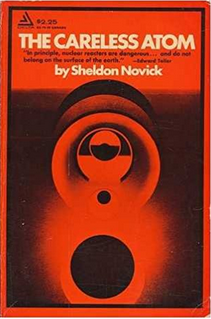 dollars, a very hefty sum in 1977.
dollars, a very hefty sum in 1977.
The major agencies involved in this effort were “consolidated intervenors”, using the law to impede developments; the Union of Concerned Scientists, mostly funded by Dr Henry Kendall of MIT; Business and Professional People for the Public Interest in Washington to front government committees and inquiries; Friends of the Earth co-ordinating environmental groups and disseminating information by advertising, books and pamphlets; Environmental Action, National Intervenors and The Public Media Centre dealing with publications and presentations. Mobilization for Survival claimed to be a coalition of 250 groups and, in mid-1978, it coordinated demonstrations across the USA. It will come as no surprise, given the left-leaning inclinations of the mainstream media, that the movement received an immense amount of favourable prime-time coverage. The nuclear power industry, by contrast, enjoyed no such support.
Many churches became involved. A division of the American National Council of Churches declared plutonium morally dubious in The Plutonium Economy: a statement of concern and called for a moratorium on its use. This followed advice from a committee whose members included the gullible anthropologist Margaret Mead and a number of others who had published papers opposing nuclear power. Grover reported that this advice filtered through the network of churches and reached a Southern Baptist politician named Jimmy Carter. This had serious consequences when he became president in 1977. By 1978 the political/religious group based in New York called City Clergy and Laity Concerned (CALC), formed originally to oppose US involvement in Vietnam, had turned its attention to distributing packages of anti-nuclear materials to churches across the nation. These included anti-nuclear prayers, liturgical aids and a pastoral letter with suggestions for organizing local churches to mobilise for the cause. The CALC coordinators were Rick Boardman and Don Luce, the latter being a public supporter of the communist “re-education camps” in Vietnam. The leaders frequently met with the Vietnamese communists in Paris and Hanoi.
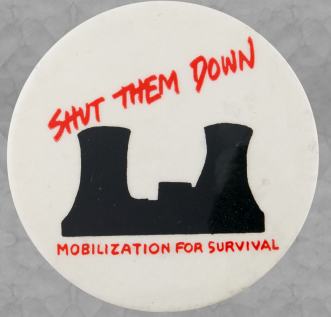 In Australia, The World Council of Churches helped to orchestrate and echo the anti-nuclear message. Prior to the 1977 federal election the Uniting Church distributed anti-nuclear propaganda in cartoon form to Northern Territory Aboriginals, followed by an official denial of responsibility, followed in 1978 by more of the same material, this time formally endorsed by church. The church’s activist opposition to uranium mining is summarised at some length in a 2005 submission to its synod.
In Australia, The World Council of Churches helped to orchestrate and echo the anti-nuclear message. Prior to the 1977 federal election the Uniting Church distributed anti-nuclear propaganda in cartoon form to Northern Territory Aboriginals, followed by an official denial of responsibility, followed in 1978 by more of the same material, this time formally endorsed by church. The church’s activist opposition to uranium mining is summarised at some length in a 2005 submission to its synod.
Investigations revealed that even the large anti-nuclear organizations were in the hands of very few individuals. The Union of Concerned Scientists was controlled by 10 to 20 people, the Environmental Action group claimed 8000 members but policy was decided by no more than eight or ten individuals. The Citizens Association for Safe Energy had 2500 addresses on its mailing list but policy was drafted, adopted and circulated by a board of 3. In 1978, The Economist investigated the protest movement and reported that the anti-nuclear campaign in Britain was passing from the hands of apolitical environmentalists into control of the radical left. The paradigm case is Greenpeace, which was abandoned in despair by Patrick Moore, one of the founding fathers, who now travels the world to preach the benefits of CO2.
The protest movement started with dedicated volunteers, became a profession supported by wealthy backers and then reached the pinnacle of achievement when governments employed activists who could work with public funding and the power of the state. An early success was the killing of the Clinch River fast breeder reactor project by President Jimmy Carter’s executive order in 1977. Many sub-cabinet posts in the Carter administration went to former public interest lawyers, consumerists and environmental activists. Fourteen key White House assistants, including the president’s chief speechwriter, came from the public interest movement. Four former anti-nuclear activists became assistant attorneys-general in the Department of Justice, and others moved into the positions of Assistant Secretaries in Health, Education and Welfare; Commerce, Interior, Agriculture, Housing and Urban Development. Ralph Nader described how the anti-nuclear movement flexed its muscle during the primaries that preceded Carter’s election.
Searching for the roots of the movement, Grover found several groups leading the call for unilateral concessions by the US at the US-Soviet Union strategic arms limitations talks. These were the US Peace Council, the National Council for American-Soviet Friendship, American Friends Service Committee (far-left Quakers), Clergy and Laity Concerned, and Women’s International League for Peace and Freedom. All of those organizations worked closely with the World Peace Council and that body spawned Mobilization for Survival as an anti-nuclear arm of the communist “peace” movement. Further investigation revealed the extent of foundation funding for environmental groups that shared the anti-nuclear stance of the communist-aligned “front” groups. The Rockefeller group backed Ralph Nader in his activities, and the Ford Foundation supported anti-nuclear environmental groups to the tune of $5.8 million over eight years from 1970.
The US provided the leadership in personnel, tactics, organization and communications for the Western anti-nuclear movement. Amsterdam was a key centre. The Institute of Policy Studies in Washington set up the Transnational Institute there, which in turn set up agencies in South Africa and the Philippines. An Australian Solidarity Collective was created in Amsterdam in 1978 in association with Greenpeace. A local offshoot of the Collective was the Transnational Cooperative in Sydney with avowed communist Laurie Carmichael and Tom Uren (below) as the directors.
The International Confederation for Disarmament and Peace (ICDP) in London was an important coordinating body and it handled World Peace Council activities when the parent body wanted to remain out of sight. The ICDP had two Australian connections at the time (1980), namely the Association for International Cooperation and Disarmament, based in Sydney, and the Congress for International Cooperation and Disarmament, operating out of Melbourne.
To indicate the extent of planning and foresight of the movement, Grover reported that the Colonial and Indigenous Minorities Research and Action group in London issued a newsletter listing native people who could be recruited by specific local groups. First on the list were Australian Aborigines, through their native land councils and the Black Resource Centre in Brisbane. The list included Indians, islanders and others in a dozen places from Canada and South America to Morocco, Chad and Greenland.
The movement had great success in obtaining media cover. The Rockefeller and Ford foundations funded The Scientists’ Institute for Public Information (CIPC) in the US to feed information to journalists, sourced from the likes of Barry Commoner and Helen Caldicott, who devotion to the planet is such that she wishes to be buried in a biodegradable cardboard coffin. The (anti-nuclear) UN Environment Programme supported the Centre for International Environmental Information where the organizers recruited a large number of scientists to be quoted as experts for contact by the mass media. This Canberra Times story — its headline is reproduced below — about the alleged peril of the proposed, and subsequently cancelled, Jervis Bay nuclear reactor is typical. Thousands of free copies of a Guide to Energy Specialists were distributed. The authors were the usual anti-nuclear suspects, such as Helen Caldicott. When genuine scientists realised what had happened they resigned from the list but the damage was done.
The Friends of the Earth arrived in Adelaide from the US in the late 1960s and worked nationwide as the leading distributors of foreign-inspired arguments with sophisticated and attractive PR material. The office moved to Castlereagh Street in Sydney and shared a building with a radical bookshop, Campaign Against Racial Exploitation, Chile Committee, Free Zimbabwe, No Ties with Apartheid, the Vietnam Society and others. In the late 1970s FOE was upstaged in the anti-nuclear push by the Movement Against Uranium Mining (MAUM) and Dr Joseph Camilleri was probably the leading figure in campaign against uranium mining.
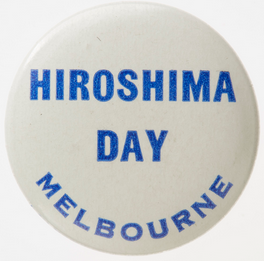 MUAM was actually an arm of the Sydney-based Association for International Cooperation and Disarmament. The proliferation of anti-nuclear groups was a standard communist procedure using front groups to inflate the apparent level of popular support. As Grover debated at various meetings he realized that there were several groups with overlapping memberships and the basic message remained the same while the front group that hosted the meeting, the specific topic and method of approach were adjusted to suit the audience and the shifting focus of the campaign. The same tactic of inflating support applied to attendance at demonstrations. On May Day, 1977, in New Hampshire only 15% of the people arrested at a disruptive march came from that state. In Australia, the Hiroshima Day demonstrations in 1978 and 1979 were held in Sydney on Saturday and in Melbourne on Sunday, with planes booked out between Sydney and Melbourne to carry protestors interstate.
MUAM was actually an arm of the Sydney-based Association for International Cooperation and Disarmament. The proliferation of anti-nuclear groups was a standard communist procedure using front groups to inflate the apparent level of popular support. As Grover debated at various meetings he realized that there were several groups with overlapping memberships and the basic message remained the same while the front group that hosted the meeting, the specific topic and method of approach were adjusted to suit the audience and the shifting focus of the campaign. The same tactic of inflating support applied to attendance at demonstrations. On May Day, 1977, in New Hampshire only 15% of the people arrested at a disruptive march came from that state. In Australia, the Hiroshima Day demonstrations in 1978 and 1979 were held in Sydney on Saturday and in Melbourne on Sunday, with planes booked out between Sydney and Melbourne to carry protestors interstate.
The movement took over an Academy of Science conference in Canberra in 1972. This was advertised as a discussion of technology and energy planning but it turned into an anti-nuclear platform and a forum for low-energy lifestyle advocacy. The Australian Conservation Foundation took a strong political line on uranium mining and urged newly formed environmental groups to focus on nuclear power. Its archives will make fascinating reading for the scholar who plumbs the documentary record of the anti-nuclear movement and its alliances. Journalists played a supporting role with fake news on the dangers. Grover reported:
“Scientifically out of their depth, the Australian media became prone, for a period, to presenting scenarios of nuclear disaster. Two headlines come to mind: ‘Radioactive Time Bomb Ticks Away at Port Pirie’ and ‘Our First Atom Death: Victim of Radiation’. The former, it transpired, referred to the natural remnants of a beach sands mining operation and the latter to the unfortunate death by leukaemia of an employee of the Atomic Energy Commission who had not been subjected to radiation in connection with his job “.
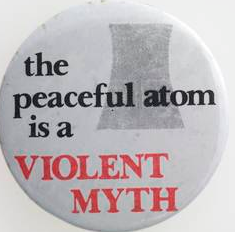 In the 1970s Australia was home for at least 26 groups driving the cause, notably Friends of the Earth, Uranium Moratorium, Australian Conservation Foundation, Australian Teachers Federation, Doctors for a Delay in Uranium Mining, Shareholders for Social Responsibility, Women Against Nuclear Energy and the World Council of Churches. That was only the tip of the iceberg because some of those groups recruited others, especially church groups, whose names did not signal their anti-nuclear stance. For example at a March 1979 meeting at the University of Sydney the list of 32 sponsors included the Catholic Missions Office, Women’s International League for Peace and Freedom, De La Salle Brothers, Little Sisters of Jesus, Society of Jesus, Mary and Joseph, Loreto House, Good Shepherd Sisters, Marcia Langton, Federated Engine Drivers and Firemen’s Association, Australian Council of Churches and the National Missionary Council.
In the 1970s Australia was home for at least 26 groups driving the cause, notably Friends of the Earth, Uranium Moratorium, Australian Conservation Foundation, Australian Teachers Federation, Doctors for a Delay in Uranium Mining, Shareholders for Social Responsibility, Women Against Nuclear Energy and the World Council of Churches. That was only the tip of the iceberg because some of those groups recruited others, especially church groups, whose names did not signal their anti-nuclear stance. For example at a March 1979 meeting at the University of Sydney the list of 32 sponsors included the Catholic Missions Office, Women’s International League for Peace and Freedom, De La Salle Brothers, Little Sisters of Jesus, Society of Jesus, Mary and Joseph, Loreto House, Good Shepherd Sisters, Marcia Langton, Federated Engine Drivers and Firemen’s Association, Australian Council of Churches and the National Missionary Council.
One of the most disturbing parts of Grover’s story is the role of the NSW Teachers Federation and Education Department in NSW in an intense anti-nuclear propaganda exercise in July 1978. Two dozen broadsheets were produced for schoolchildren with contents that shocked many teachers and students. Much of the material came from the US and it was laid out in the format of study guides. As Grover observed:
“Videotapes, sound tapes and other audio-visuals were listed, referring to the overseas ‘information’. The emotional speeches of paediatrician Helen Caldicott, and those of plausible Paul Ehrlich (with the magnificent voice) featured prominently, with taped sessions from the ABC’s ‘Broadband’, ‘City Extra’ and other sessions that contributed prominently to the anti-uranium case. Activities sheets followed explaining how the concepts could be best implanted in children’s minds.”
Among the materials were powerful and emotional pictures from the aftermath of the explosion at Hiroshima and it was clear that school pupils would be deeply affected by the emotional impact. Many teachers were concerned about this but their hands were tied by the rules of the NSW Teachers Federation and the open support of the Labour Minister for Education.
A small grass-roots group of concerned parents and teachers formed to attempt to achieve some professionalism and balance. They pointed out that conscientious or dissenting teachers could be silenced by the Federation rule which permitted suspension from membership and a fine on teachers acting contrary to any decision of the Council. At least two schools known to Grover organised a speaker from each side of the argument. One teacher used her own money to produce some material to inform students of the other side of the case. She was forced to remove it from the official “resource kit” she was handing out because it was contrary to the union policy and the kit was being distributed to “redress the balance” of propaganda! Nobody was aware of widespread propaganda or even basic information from the other side of the case!
On the PR front outside the schools many public libraries were well supplied with anti-nuclear propaganda and, inevitably, the ABC was helpful in the cause. Grover reported that some ABC staff uncritically passed on negative nuclear-related news from overseas and from the local groups.
“Some of the success of the anti-uranium campaign is due to the manner in which the Commission has been used by activists. The misinformation being broadcast almost daily at one time by Radio 2JJ has shown no respect for the truth and has had a major impact on schoolchildren.”
The movement captured a new minority party — The Australia Party — founded in the 1960s by dissident Liberals during the Vietnam War. Grover described their 10-page question-and-answer document on uranium as “shockingly dishonest”, and much the same description applied to statements from the minority party that followed it, the Australian Democrats.
A symptom of the weak response to the movement was the lengthy and unsatisfactory conduct of the inquiry that produced the Fox and Parker reports in response to allegations of dangerous leaks at the Ranger uranium mine in the Northern Territory. The investigation and hearings extended from September 1975 to August 1976, with 281 people presenting evidence. The reports eventually found that uranium mining could proceed, with heavy qualifications.
Grover noted that the reports were quoted by all parties, leaving the public confused. The inquiry did not critically evaluate the large bulk of environmental-impact studies compiled by the mining companies and the objectors. The Commissioners referred to “excessively optimistic” scenarios painted by experts in the mining companies and noted the “distinguished nuclear scientists who are flatly opposed to the further development of nuclear energy and present facts and views opposed to others of equal eminence”. The three commissioners were not experts in the field and they were apparently prepared to give weight to all evidence in the absence of cross-examination of witnesses.
A similar inquiry in Canada delivered a verdict in favour of mining in six months, and the 1977 Wind Scale inquiry in Britain completed in 100 days. Conducted by Justice Parker, this examined a proposal to build a plant on the Cumbrian coast to reprocess oxide fuel from thermal nuclear reactors. Evidence was taken from witnesses pro and con under oath and witnesses were subjected to cross-examination by barristers. The evidence was analysed by experts. Grover reported “It ended with Mr Justice Parker giving ‘unequivocal advice’ that the facility should be built without delay to ‘obviate a storage and disposal problem’.”
One of the exhibits was a film called Caging the Dragon, ostensibly dealing with safety at Windscale. Shots of the site faded to film of a man who had suffered severe burns, followed by a reference to a fire at Windscale and images of huge flames emerging from the top of a tower. Under cross examination the film-maker admitted that the pictures of the “radiation victim” were taken from a non-nuclear accident in the US and the flames came from a flare stack at a coke works in Sheffield.
In the prelude to his findings, Justice Parker commented:
“The ordinary viewer would understand the sequence to be pictures of what had happened at Windscale and that the repetition of the pictures would be taken as a reminder that the fire depicted there could happen again. As to the pictures of the radiation victim, I remain of the opinion that viewers would take the pictures to represent a victim of a Windscale accident. The visual impression is so strong that it might not be removed by an explanation”.
His point about the persistence of emotional reactions based on visual images is relevant to the use of belching smokestacks to depict “carbon pollution” in the current “climate wars”. Carbon dioxide is an invisible gas, the notion of carbon pollution makes no scientific sense and the image of smoking chimneys functions as a deceptive background to messages of doom and gloom from climate alarmists.
Grover’s story of the anti-nuclear campaign stopped in 1979 while the environmental movement was still gaining momentum. Many triumphs were still to come, such as the Franklin Dam campaign in Tasmania which saw the Hawke government use the device of a UNESCO World Heritage listing to obtain a narrow High Court decision to halt the development. That marked the beginning of the ALP strategy to court the infant Greens, which reached its climax with the coalition of the Greens and Gillard government (below) in 2010 (below). The jungle of red and green tape has grown profusely to a point where developments of all kinds, from a $10 Billion coal mine to a backyard shed, can be bogged down by Green lawfare.
The greatest victory so far is the alarm generated about global warming and climate change. The most immediate impact in Australia is the impending crisis in the power system due to efforts in several states to achieve unrealistic targets of power from expensive and unreliable sources. This is a particularly absurd situation because we could have some of the cheapest power in the world, but we appear to be leading the way to demonstrate the poverty of the Green and renewable future. We produce a little over one per cent of the world’s human-generated CO2 emissions. In other words, we could turn off all our electric appliances and return to the Dark Ages without making any difference to the climate, even allowing the contested claim that CO2 is a significant driver of warming.
The Climate Caper, as Garth Paltridge titled his book (below), has been powered by several factors and they all need to be addressed to reverse the slide to deindustrialization of the west. These include the elevation of environmentalism to the status of an Established Religion, the capture of a significant body of scientific opinion, shallow reporting in the mainstream media and the recruitment of elite groups represented by Kevin Rudd and Julie Gillard on one side of politics and the Prime Minister on the other side.
Arguably the anti-nuclear power movement was the single most important element in the evolution of radical environmentalism. The movement used the “front group” tactic to dominate the public discussion and convert reasonable concerns into hair-trigger sensitivity to any environmental impact, be it real, imagined or confected. It pioneered the tactics of ecological alarmism and brainwashed generations of school pupils. It stimulated the formation of a complex infrastructure of activists and organizations in the public bureaucracy supported by non-government agencies that can be activated at short notice. However, despite the profound and lasting influence of the anti-nuclear movement its activities have largely faded from memory or dropped out of sight because it happened in the decades up to 1980, which makes it ancient history for most people today.
A longer version of Grover’s story with more details of the people and radical groups around the world which blocked uranium mining and atomic power can be found here.
Comments are closed.



